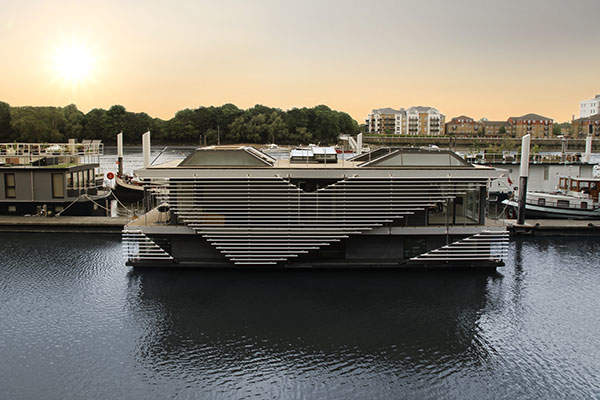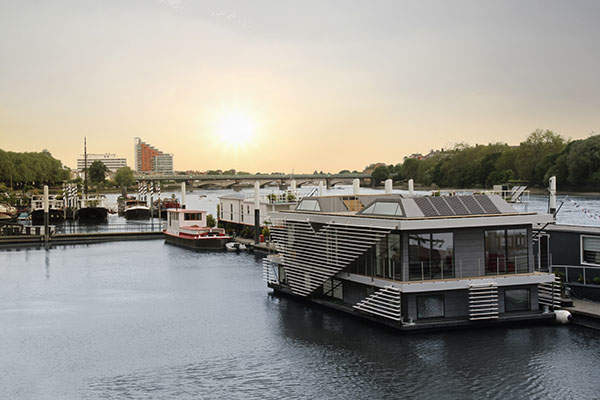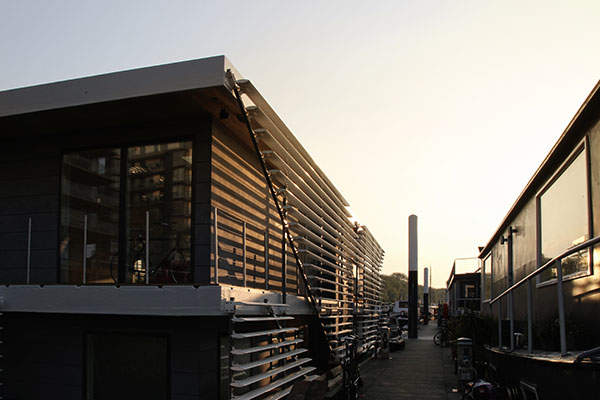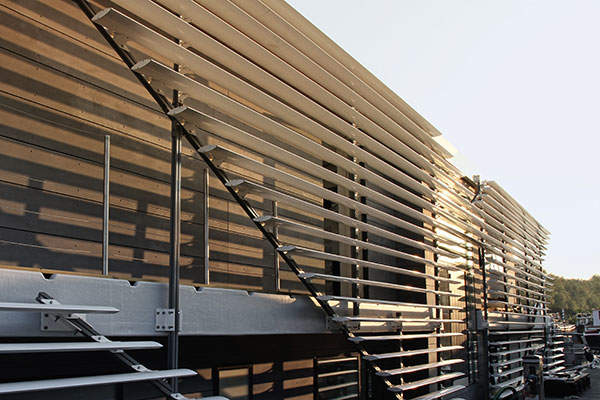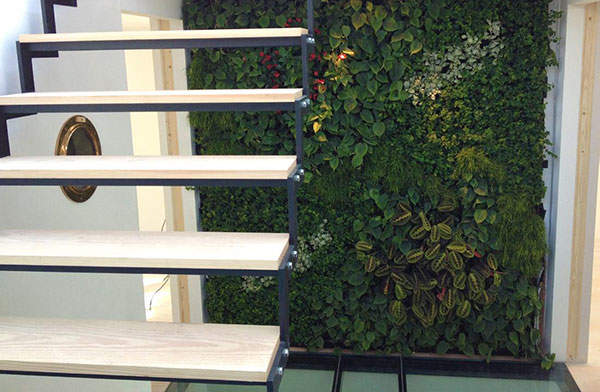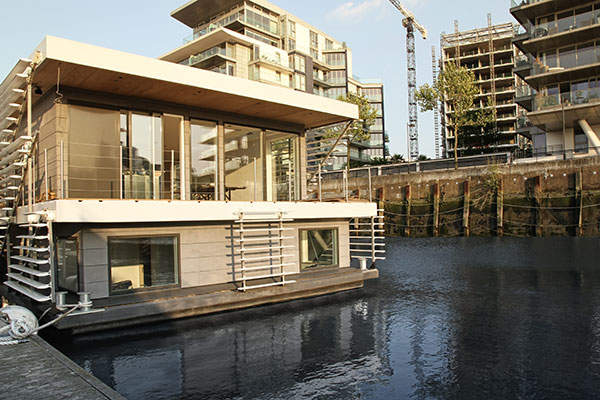
Inachus is a floating home designed and developed by Sanitov Studios in collaboration with architect Henrik Lambreth. The project, named after the Greek river god, was unveiled at the London Design Festival in September 2012.
The floating home was built at a cost of $1.2m and is part of Sanitov Studios’ Urdaimonia project aimed at creating sustainable cities. Sanitov Studios plans to build 40 such homes in London, with Energy Level 5 standards.
Design and facilities of the floating home in London
The Inachus floating home is 17m long and is highly insulated and carries a flexible design. Instead of the traditional open and closed design, the Inachus includes sliding walls that enable occupants to arrange the space within the home according to their requirements.
The first Inachus model was unveiled in September 2012 is spread over two floors and includes three bedrooms, two bathrooms, an open-plan living room and kitchen. It also includes wrap-around balconies and an open terrace with a green roof and a hot tub.
A living green wall faces the entrance of the home. It bridges the gap between inside and outside and also improves indoor air quality. The house features external layered louvers, which protect it from direct sunlight and decrease solar gain. The louvers also stabilise and protect the home from winds.
cat5e cabling has been used throughout the home to provide networking and television connection. The living area features Danish furniture and FSC Douglas Fir flooring. The Sonos music system in the home enables music to be played from any computer or network device.
Materials used in the construction of the Inachus
The Inachus features a concrete hull instead of the traditional steel hull, which requires floating homes to be removed from water every 10 years. The concrete hull ensures that the home is maintenance free for more than 60 years.
The facade of the home is built of Eter-Color fibre cement cladding material supplied by Marley Eternit. The external walls are covered with SIP panels that reduce heat loss.
Sustainable and recyclable material, including bamboo, industrial wood and recyclable concrete has been used in the construction of the home. Recycled porcelain has been used in the kitchen cabinets, flooring for the master bedroom and bathrooms.
Related project
Green Float Concept, Japan
Green Float, also known as Botanical City, is a proposed floating city concept developed by Shimizu Corporation of Japan. The futuristic project is envisaged as an environmentally friendly island floating on the waters of the Pacific Ocean in the equatorial region. The city will feature residential space, vegetation factories, and office and commercial spaces.
Sustainability features of Inachus
Inachus has been built to Energy Level 5 rating with zero heating, ventilation and carbon emissions. This was achieved through the use of heat generated by sunlight, and the occupants and equipment to warm the home. These sources serve the majority of the heat requirements of the home. A source heat pump that uses natural carbon dioxide refrigerant also provides heating through the ducting in the ceiling.
In addition, the home is equipped with high-performance insulation and triple glazing to minimise energy loss. Ventilation is mechanically controlled to ensure heat recovery. Solar panels are fitted to the roof to generate enough electricity to power the home.
The sauna in the bathrooms derives heat from the outdoor tiles. It also redistributes residual heat throughout the home. Rainwater and grey water are harvested for cleaning the home and watering the interior green wall.
All lighting, heating and electrical systems are controlled by a wireless system called Lutron. The system helps in reducing energy costs and can be controlled through a smartphone or tablet using the Lutron application. The application enables a user to control the lighting and electrical systems in the home from anywhere in the world through an internet connection.
Key players involved with the design and construction of the floating home
The floating home features furniture designed by Fritz Hansen. Samsung has supplied the home with various consumer and home appliances, including a refrigerator, washing machine, microwave oven, cook steam oven, tablets and LED TVs. Other companies involved in the development of the project include D line, Forbo, Ege, Vola, Dinesen and Velfac.

